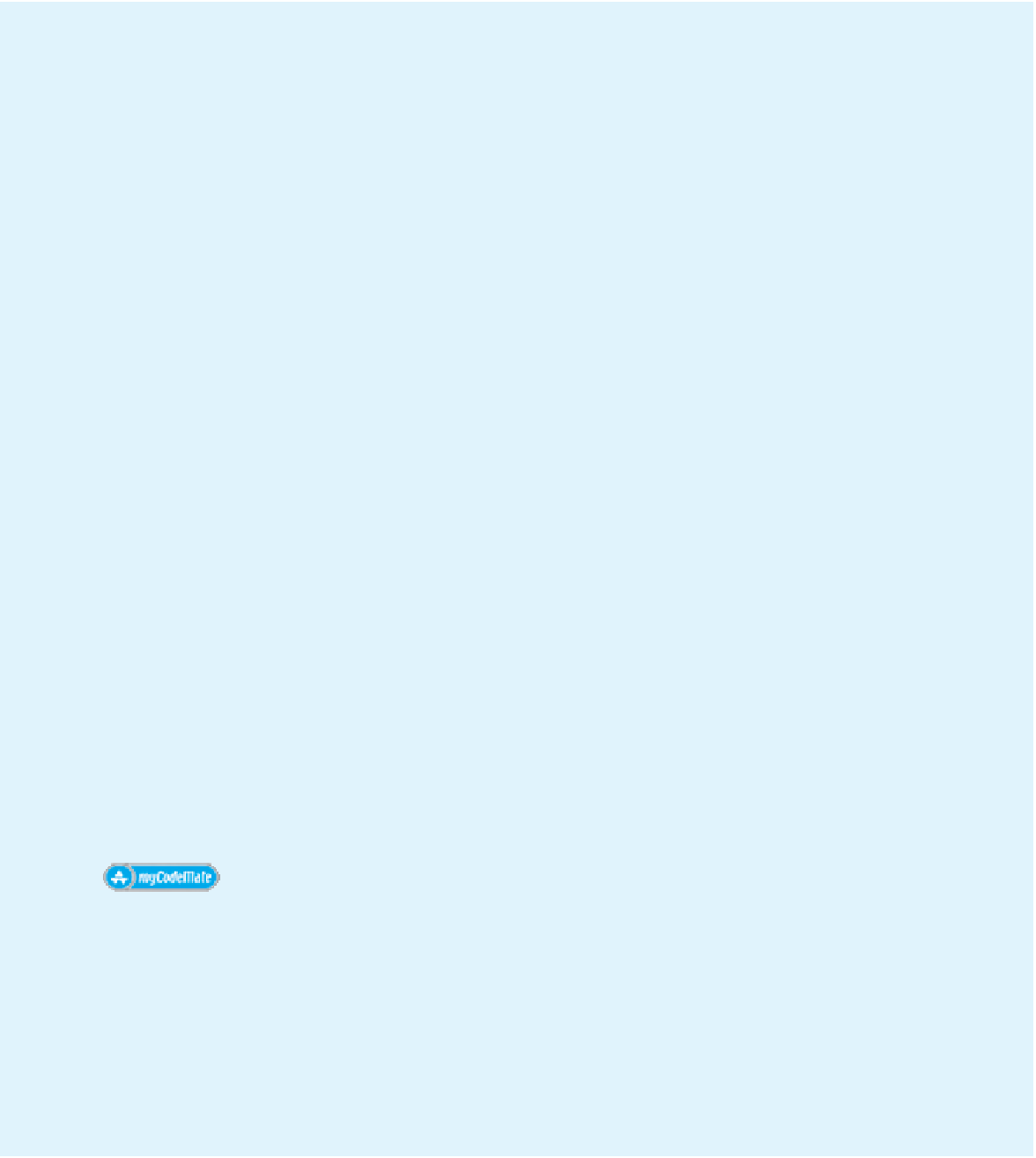Java Reference
In-Depth Information
Write a computer program that inputs a degree of difficulty and seven judges'
scores and outputs the overall score for that dive. The program should ensure
that all inputs are within the allowable data ranges.
2.
A common memory matching game played by young children is to start with a
deck of cards that contain identical pairs. For example, given six cards in the
deck, two might be labeled 1, two labeled 2, and two labeled 3. The cards are
shuffled and placed face down on the table. A player then selects two cards that
are face down, turns them face up, and if the cards match they are left face up. If
the two cards do not match they are returned to their original face down posi-
tion. The game continues until all cards are face up.
Write a program that plays the memory matching game. Use sixteen cards that
are laid out in a 4
4 square and are labeled with pairs of numbers from 1 to 8.
Your program should allow the player to specify the cards that she would like to
select through a coordinate system.
For example, in the following layout:
1234
×
1 8 * * *
2* * * *
3 * 8 * *
4* * * *
All of the cards are face down indicated by *. The pairs of 8 which are face up are
at coordinates (1,1) and (2,3). To hide the cards that have been temporarily placed
face up, output a large number of newlines to force the old board off the screen.
Hint:
Use a 2D array for the arrangement of cards and another 2D array that
indicates if a card is face up or face down. Or, a more elegant solution is to create
a single 2D array where each element is an object that stores both the card's value
and face. Write a function that “shuffles” the cards in the array by repeatedly
selecting two cards at random and swapping them.
Note: To generate a random number
x
, where 0
x
< 1, use
x = Math.random();
.
For example, multiplying by six and converting to an integer results in an integer
that is from 0 to 5.
3.
Write a program that reads in the average monthly rainfall for a city for each
month of the year and then reads in the actual monthly rainfall for each of the
previous 12 months. The program should then print out a nicely formatted table
showing the rainfall for each of the previous 12 months as well as how much
above or below average the rainfall was for each month. The average monthly
rainfall is given for the months January, February, and so forth, in order. To
obtain the actual rainfall for the previous 12 months, the program should first




















